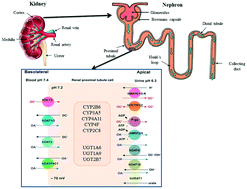Phillips JA, Grandhi TSP, Davis M, Gautier, J-C, Hariparsad N, Keller D, Sura R, Van Vleet TR. 2020. A pharmaceutical industry perspective on microphysiological kidney systems for evaluation of safety for new therapies. Lab Chip 20(3):468–476, doi: 10.1039/c9lc00925f.
Abstract
The human kidney contains approximately one million nephrons. As the functional unit of the kidney, the nephron affords an opportunity to approximate the kidney at a microphysiological scale. Recent emergence of physiologically accurate human tissue models has radically advanced the possibilities of mimicking organ biology and multi-organ combinations in vitro. Anatomically, the nephron is one of the most complex, sequentially integrated microfluidic units in the body making the miniaturized microfluidic systems excellent candidates for capturing the kidney biology in vitro. While these models are promising, there are a number of considerations for practical implementation into a drug development paradigm. Opportunities for pharmaceutical industry applications of new MPS models often start with drug safety testing. As such, the intent of this article is to focus on safety and ADME applications. This article reviews biological functions of the kidney and options for characterizing known roles in nephrotoxicity. The concept of “context-of-use” is introduced as a framework for describing and verifying the specific features of an MPS platform for use in drug development. Overall, we present a perspective on key attributes of microphysiological kidney models, which the pharmaceutical industry could leverage to improve confident safety and ADME evaluations of experimental therapies.

